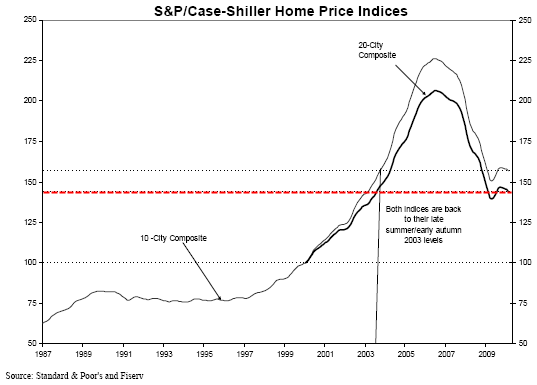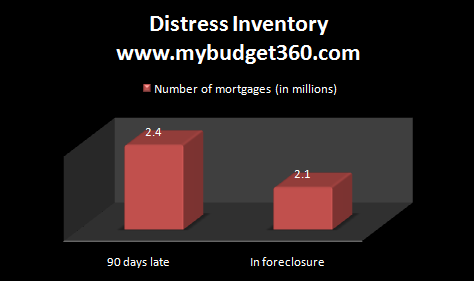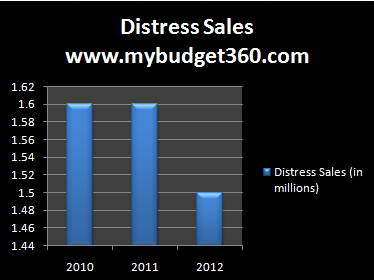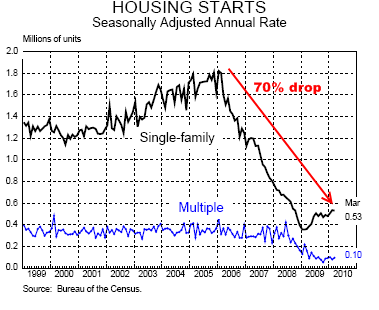Shadow inventory sales for years to come – 1.6 million distress sales in 2010, 1.6 million in 2011, and 1.5 million in 2012. By summer of 2011 REO pipeline will rise to 536,000.
- 8 Comment
Wall Street as usual enjoys denying facts until they become so obvious to the common person on the street. By then, it is too late to react. For example, subprime wasn’t a problem until it lit the fuse that set the global economy into a downward tailspin. Analysts at Barclays Capital are now coming out giving full attention to shadow inventory in the markets. Even though their report states that the pipeline for shadow inventory may be topping out, we have such a large number of distress properties in the pipeline that we won’t see any draw down of distress sales until 2012. And ultimately the sales end is what keeps prices lower because distress properties sell for less.
As we know from various reports over 7 million homes are currently 30+ days late or in a state of foreclosure. The new data from Barclays looks at severe distress:
Source:Â Barclays Capital
2.4 million mortgages are 90+ days late. Another 2.1 million are in the actual foreclosure process. Yet banks only have 478,000 homes listed as REOs today. In other words, we have a giant pipeline of distress properties that will be hitting the market, trickle or no trickle, for the next few years. What this also tells us is that pressure on housing prices will be the status quo for years to come with an already pre-built supply of cheap properties.
Barclays Capital also put out their projections of actual distress sales for the next few years:
If you assume that we sell 4.5 to 5 million existing homes per year, this amounts to over 30 percent of all existing home sales for the next few years will be distress properties. This is already in the bag. So even though you might hear that the pipeline is getting smaller I wouldn’t exactly take this as a vote of confidence for the housing market. I mean how much worse can it get? There are such a large number of homes in distress that it is simply clogging the inventory pipelines for years to come.
And part of this also jumps in directly with home building and housing starts:
Even today, after a supposed recovery housing starts are down by a record breaking 70 percent from their recent peak. The last time we saw anything resembling this was back during the Great Depression when home building came to a screeching halt. But if you look above at the multi-unit starts this hasn’t even moved. Why? Commercial real estate is the next major problem area for the markets. With a saturated market, vacancies are still sky high so the need for more housing units is going to be muted for years to come.
The problem with the shadow inventory pipeline is that it also guarantees that construction will not lead us out of this recession as it has in the past. Then again, never have we been so dependent on real estate and the financing from Wall Street to create a bubble of legendary proportions. This massive build up with inventory guarantees pressure for years to come and home prices will stagnant or drop short of middle class incomes going up.
Even Barclays understand that the only way we get out of this is if shadow inventory is liquidated in an “orderly fashion†and job growth comes into the picture. And we haven’t really seen much in that regard. Home sales for the moment are highly dependent on low mortgage rates and demand that was pulled forward by tax credits. Yet those programs are now coming to an end and the market will have to stand on its own two feet. Banks have been buying time hoping that miraculously prices would once again recover and they would be able to offload inflated homes onto the market with minor losses. Yet home prices have hit the wall even after obscene amounts of money to prop them up:

What can we gather from the above data and information with shadow inventory? Prices are likely to fall unless:
-Wages increase
-Job growth comes back strongly (with good paying jobs)
-We bring back easy money no-doc mortgages
Short of that, prices will continue to drop to reflect the actual amount Americans can pay.
If you enjoyed this post click here to subscribe to a complete feed and stay up to date with today’s challenging market!8 Comments on this post
Trackbacks
-
slavelabor said:
Dude…..if everybody makes $10/hr pre-tax, that means the most house they can buy if for about $50-$60K TOPS. Since the only jobs now available seem to be in the $10-$12/hr range, the average house price must drop to roughly these levels. With the coming oversupply of foreclosures, banks will simply dump at any price they can get, once they get sick of holding the property, paying property taxes, maintenance, insurance etc. A REO is a huge expense for a bank, and they want to get rid of them ASAP, and get them into the earning asset category. Give it about a year or two and banks will be dumping properties for 20% of previous sales prices. If you want to see potential future of house prices in the USA, just take a look at Detroit, a prime example. Houses for $500-$1000 and NOBODY WANTS THEM, and I don’t blame them. I’d rather have a small piece of farmland than a POS house which will cost property taxes, insurance, even in the sorry state that it is in.
My prediction of future of the USA…….unfortunately total economic collapse. It may happen suddenly, when nobody expects it, but it will happen. Too much debt everywhere, no way to ever pay it off, constant rolling over of debt just to pay old debt, insane and unsustainable cycle. Once total economic collapse happens, the only thing that will count is who has the guns, ammo, food, and enough health to survive. There will be a rebellion of the lower and soon the middle classes, once they have nothing to lose there will be a civil war of one type or another, with massive casualties.
Unfortunately the USA has lived on borrowed time for far too long, and a moment of reckoning is upon us. Now you know why the Mayan calendar ends in 2012.
May 18th, 2010 at 9:04 pm -
Richard P said:
I live in Atlanta and I read reports about thousands and thousands of homeowners going onto foreclosure every month; however, I do not see that many houses hitting the market, so I suspected banks were holding them either because they are overwhelmed or they were hoping for prices to go up.
The question is, how long can they hold these properties in their portfolios? Do they have plenty of bailout money to go on forever?
May 19th, 2010 at 12:30 pm -
David said:
slavelabour nailed it. his namesake should have been included – slavelabour – as the end game or part of for the criminals. Get ready for the new world banking tax to “avoid another bank meltdown”
The good news is time is running out on these guys so push back
May 19th, 2010 at 1:36 pm -
pham said:
These numbers reflects the CURRENT delinquencies and foreclosures, correct? What about the coming influx of all the Option-ARM, Alt-A mortgage recasts from here to 1st quarter of 2012? How many more delinquencies and foreclosures will that add to the existing number.
May 19th, 2010 at 4:56 pm -
Jan Parker said:
I agree with pham, we are at the beginning of the defaults. All mortgages will be underwater. I think we should all stop paying our mortagaes now, and let the banks fall, fail, and get out of our lives forever. Rather spend the money on assets to get you through a great upheaval. I’ve watched this go down from the sidelines, the banks will take down our oppressive government with them because the government owns 98% of all mortgage paper, and these banks are the ones that roll over the US debt. That’s why they gave them the bailouts, it wasn’t aulturism, it was self preservation. I don’t like anarchy like anyone else but what has either of these two done for the middle and lower classes in my lifetime? Both have just taken taxed and abused us. I say good riddance, let them fall. You really didn’t think you were ever going to get social security anyway did you? It’s been a ponzi scheeme since it was started, another way to hide the debt from the public. Nixon took us off the gold standard before I went to kindergarden, it’s been a wild ride, but it’s over now and we may as well recognize it. Good Luck
May 21st, 2010 at 6:50 pm -
mmm said:
perhaps its a trap to force the low low interest rate earning deposits into low term dead money real estate for the attempt to bleed the renters and prevent purchace power loss
May 21st, 2010 at 7:50 pm -
CPA, MBA said:
Cheer up everybody. Obama will monetize the debt, which will bring back inflation and the housing prices will go up. They will still be affordable because wages will go too. The Chinese know what is coming and they will get screwed. The Chinese are in a difficult situation. They have to keep their people employed or they riot. Their people make goods for export to us that Walmart sells and pays their clerks( you know what they get).
June 18th, 2010 at 8:42 pm -
MegaCynic said:
The delay in the implementation of mark-to-market accounting for ‘infrequently traded assets’ allows banks to continue to hold mortgage assets at origination value. In some areas of California there are people who are in default, having not paid their mortgage payment for months, but the banks will not finish foreclosure proceeding because the banks or investors do not want to become the legal owner of the property. They don’t want to have to pay property taxes, guard the homes from vandals and thieves, and pay homeowner fees and maintain the properties.
I recently read where a college professor in California said holding these properties off the market prevents flooding the supply of houses on the market and maintains orderly pricing. It seems to me as the supply of ‘shadow inventory’ increases and knowledgeable people watch it increase the size of the growing inventory makes people reluctant to enter the market because of uncertainty as to how the market will ever get to equalibrium pricing. In Japan they called this phenomenon The Lost Decade.
June 27th, 2010 at 6:35 pm



 If you enjoyed this post click here to subscribe to a complete feed and stay up to date with today’s challenging market!
If you enjoyed this post click here to subscribe to a complete feed and stay up to date with today’s challenging market! Follow us on Twitter!
Follow us on Twitter!